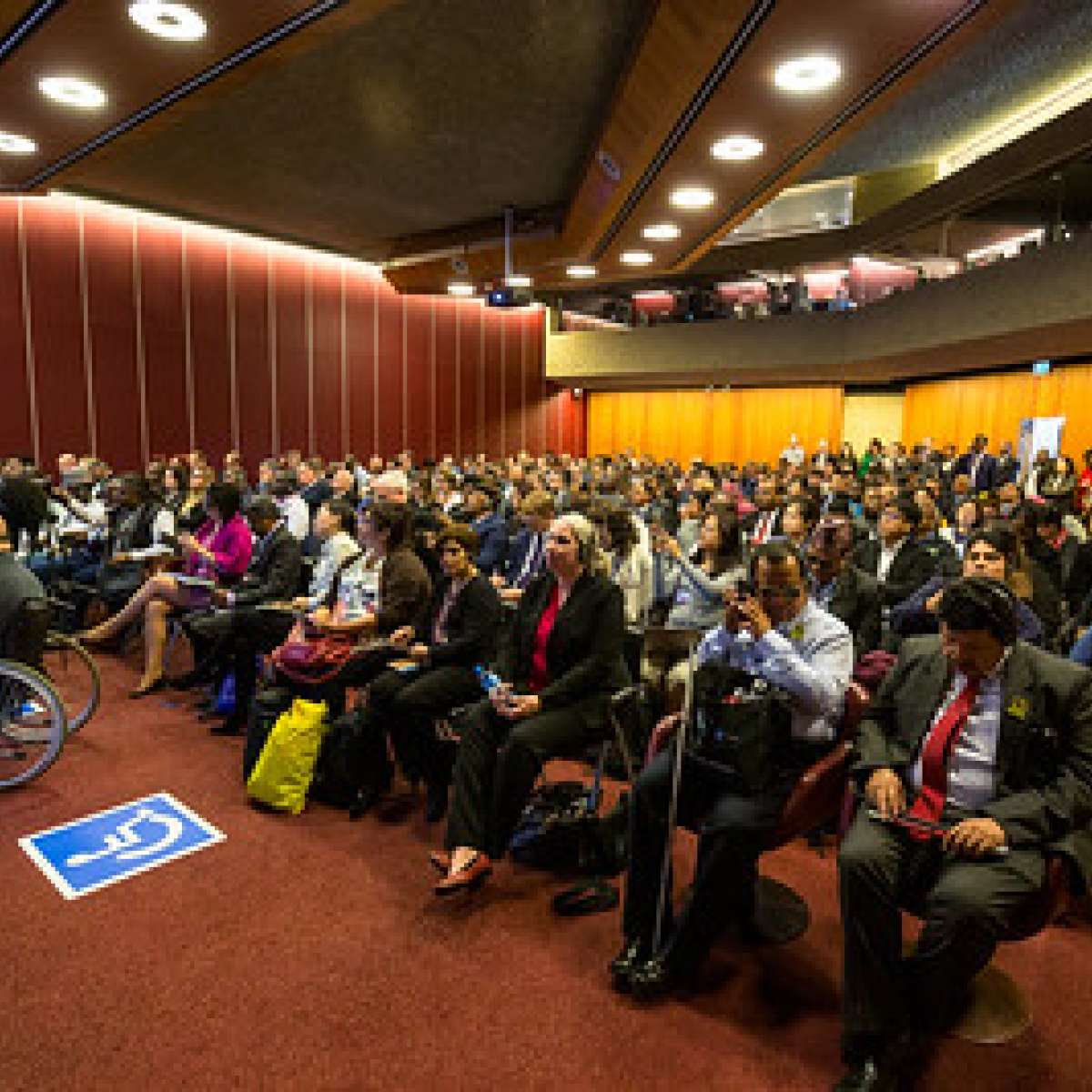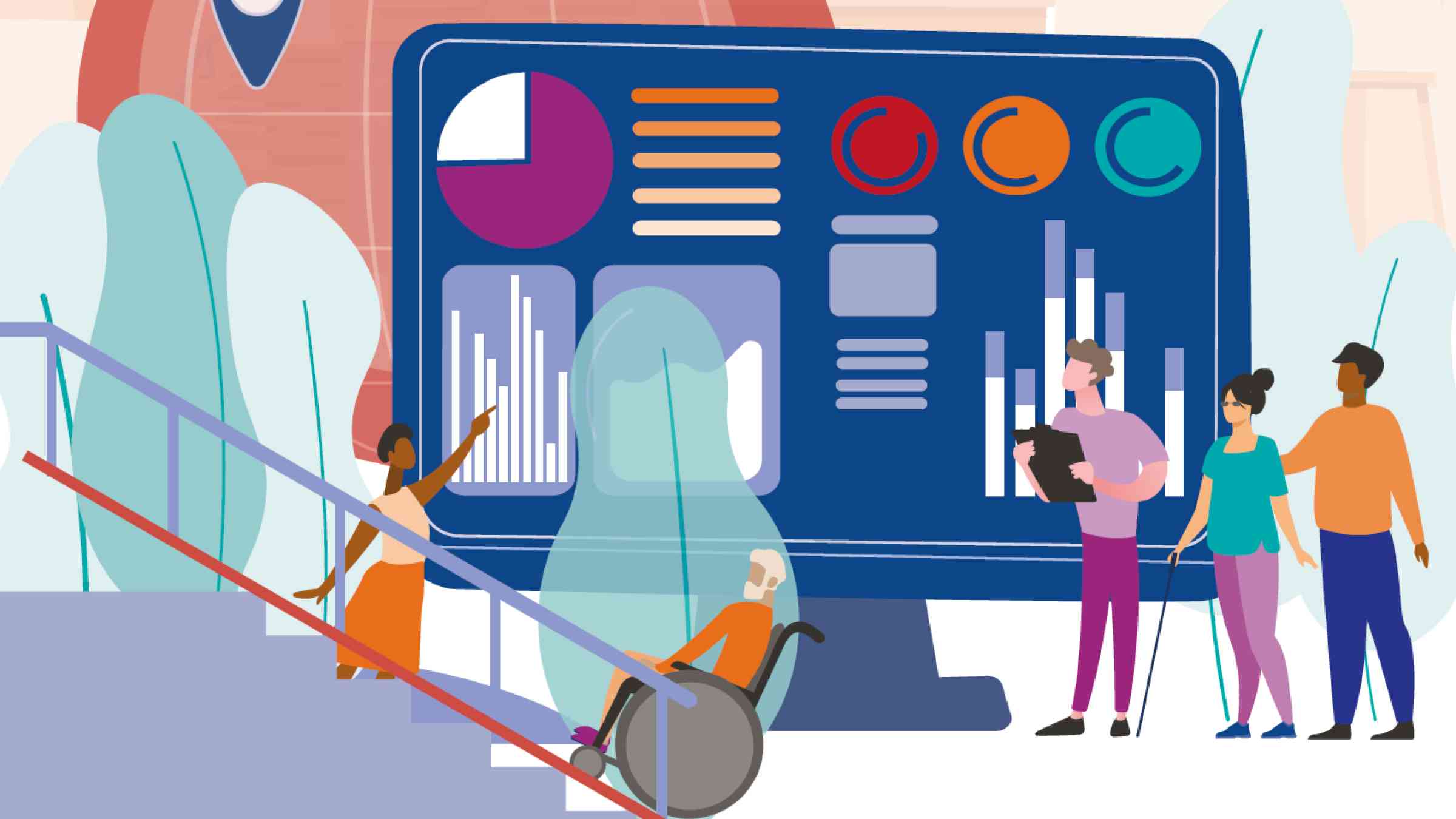2023 Survey on Disability and Disasters
People with disabilities make up 16% of the world’s population, 80% of whom live in the Global South. They tend to be the most vulnerable to natural disasters, climate-related disasters and global health emergencies.
The United Nations World Conference on Disaster Risk Reduction (UNDRR) conducted the Global Survey on Disability and Disasters 2023 as a follow-up to the 2013 Global Survey to gauge progress on disability inclusion in disaster risk reduction.
The results indicate that progress in disability inclusion over the past decade has been limited, with no significant differences across regions.
Check out the report highlights and interactives below, or download a PDF of the full report:
2023 Global Survey on Disability and Disasters
People with disabilities make up 16% of the world’s population, 80% of whom live in the Global South. They tend to be the most vulnerable to natural disasters, climate-related disasters and global health emergencies.
The United Nations World Conference on Disaster Risk Reduction (UNDRR) conducted the Global Survey on Disability and Disasters 2023 as a follow-up to the 2013 Global Survey to gauge progress on disability inclusion in disaster risk reduction.
The results indicate that progress in disability inclusion over the past decade has been limited, with no significant differences across regions.
Check out the report highlights and interactive sections below, or download the full report:
investigation
The Sendai Framework for Disaster Risk Reduction 2015-2030 highlights the need to recognize people with disabilities as contributing stakeholders and include them in all disaster risk reduction policies and practices.
The United Nations Office for Disaster Risk Reduction (UNDRR) conducted the Global Survey on Disabilities and Disasters 2023 as a follow-up to the Global Survey 2013 to gauge progress in the inclusion of persons with disabilities in disaster risk reduction. The survey aimed to determine whether persons with disabilities are prepared for potential disasters, whether early warning and risk information is available and accessible, whether persons with disabilities are aware of national and local disaster risk reduction plans, and whether persons with disabilities are participating in disaster risk reduction decision-making and planning.
The survey was conducted between January and March 2023 and received a total of 6,342 responses from 132 countries. For comparison, the 2013 survey received 5,717 responses from 137 countries.
The results indicate that progress in disability inclusion over the past decade has been limited, with no significant differences across regions.
Read on for report highlights. Or,
1. Personal Preparation Plan
“As a person with a disability, I […] Be careful of disasters and epidemics. […] I set up emergency contacts including local caretakers, the government, my closest classmates, neighbors, and family members who could help me evacuate. […] I adjusted my work and travel plans [COVID-19] Prevent pandemics to reduce the risk of infection.”
Male respondent from East Asia (age 41)
2. Evacuation Capability
“Personally, if a disaster strikes, it’s hard to run for help or even move around and reach for things if you’re not prepared.”
Corazon Bajuyo Clarin, Chairperson, Cebu Disaster Risk Reduction Network for People with Disabilities
“Emergency response [system] In my area, disaster information is often unclear, making it difficult to evacuate, especially when we need help.”
Male respondent from East Asia (age 41)
3. Providing disaster information in an accessible format
4. Awareness of disaster prevention plans
Only 11% (708 people) of people with disabilities said they were aware of national disaster risk reduction plans and 14% (897 people) said they were aware of local disaster risk reduction plans.
“Access and functional needs are only scratched the surface. [of persons with disabilities] In my county’s emergency response plan.”
Female respondent from North America (age 64)
5. DRR planning that addresses the specific needs of people with disabilities
Only 8% (488) reported that their local disaster risk reduction plans addressed the specific needs of people with disabilities.
“We have a national risk and disaster prevention plan, but we don’t have enough sign language interpreters for the deaf. We are not well prepared to deal with people with disabilities in the event of a disaster.” […] We need a better environment, better communication and better access to information.”
Female respondent from Central America (age 67)
6. Participation in decision-making at the local level
86% (5,484 people) of people with disabilities said they do not participate in community-level DRR decision-making and planning, while 57% (3,634 people) said they would like to participate.
“Persons with disabilities like me have never been involved or consulted in the development of risk and disaster management plans and strategies. [we can] We are assuming that our needs are not being taken into consideration.”
Female respondent from Africa (date of birth unknown)
75% (4,727) reported that they did not have or were not aware of mechanisms to enable people with disabilities to participate in local disaster risk reduction decision-making. Accessibility issues, attitudes and other barriers continue to limit participation.
“I was not asked to participate in the preparation of the plan, I was not trained on procedures for dealing with disasters, and the municipality had not announced its intention, initiation, or success in preparing a plan to deal with emergencies.”
Male respondent from an Arab country (age 53)
8. Leadership role towards disability inclusion
Sixteen percent (1,040) reported that they currently have leadership positions dedicated to disability inclusion in their governance structures, but these positions often do not have people with expertise on disability assigned to them.
9. Displacement
24% of respondents reported being forced to flee due to a crisis or disaster. The main cause of displacement (50%) was armed conflict or widespread violence.
Of these, 57% were internally displaced (within their own country), 21% were refugees (fleeing to safety in another country), 10% were refugees who had returned to their country of residence, 10% were asylum seekers, and 2% were international migrants.
The UNDRR’s new 2022-2025 Strategic Framework not only mainstreams disability-inclusive disaster risk reduction activities across its strategic objectives, but also, for the first time, includes a dedicated deliverable to support disability-inclusive disaster risk reduction – an important step that recognizes the importance of moving from selective engagement to systematic implementation.
For example, at the Global Platform for Disaster Risk Reduction in May 2022, UNDRR and the host country committed to making the event disability-accessible, and more than 200 people with disabilities participated – double the number from the previous Global Platform in 2019.
The findings of the 2023 survey on persons with disabilities and disasters will inform UNDRR’s ongoing efforts to promote the inclusion of persons with disabilities in all aspects of disaster risk reduction at all levels.


